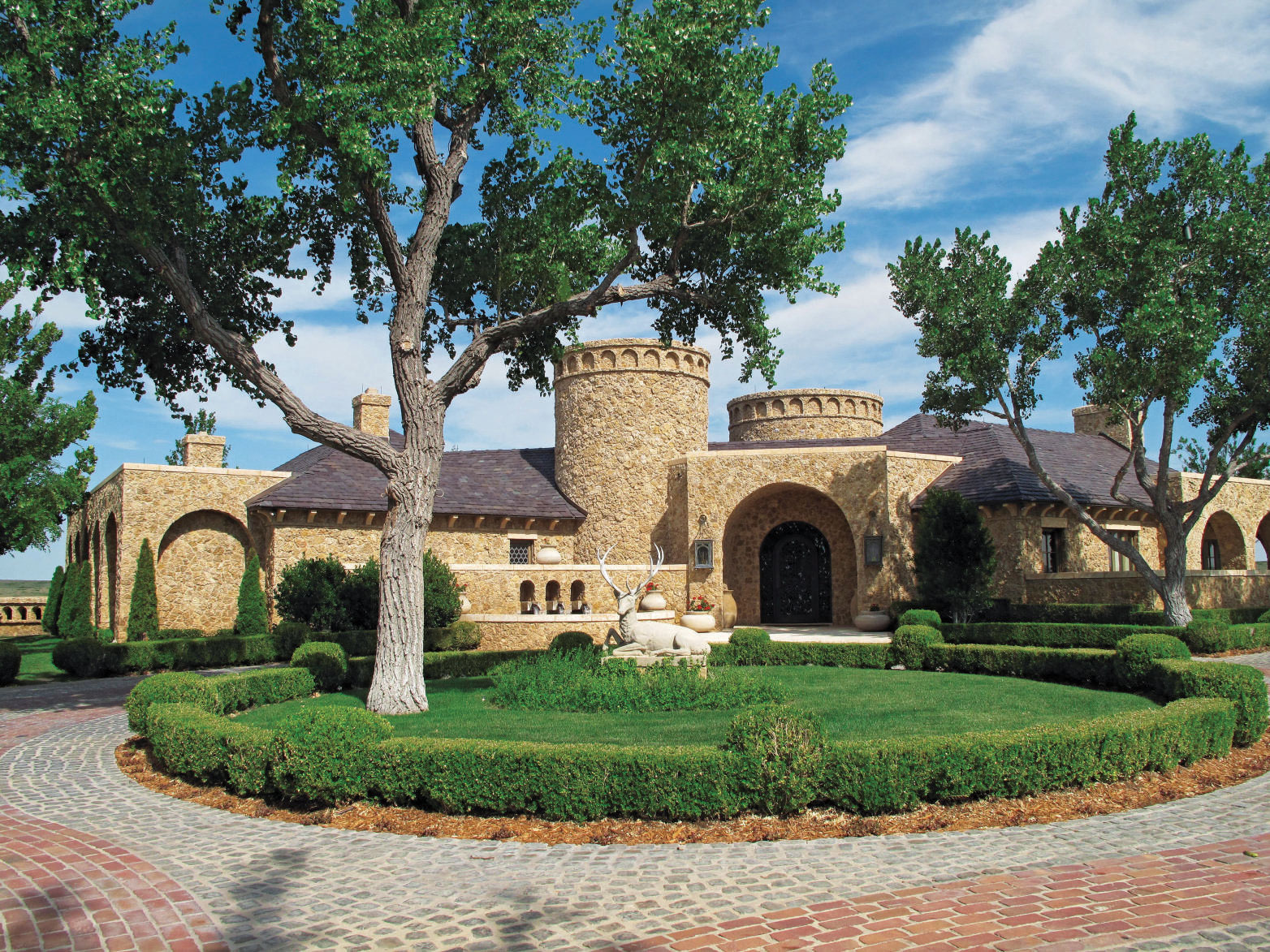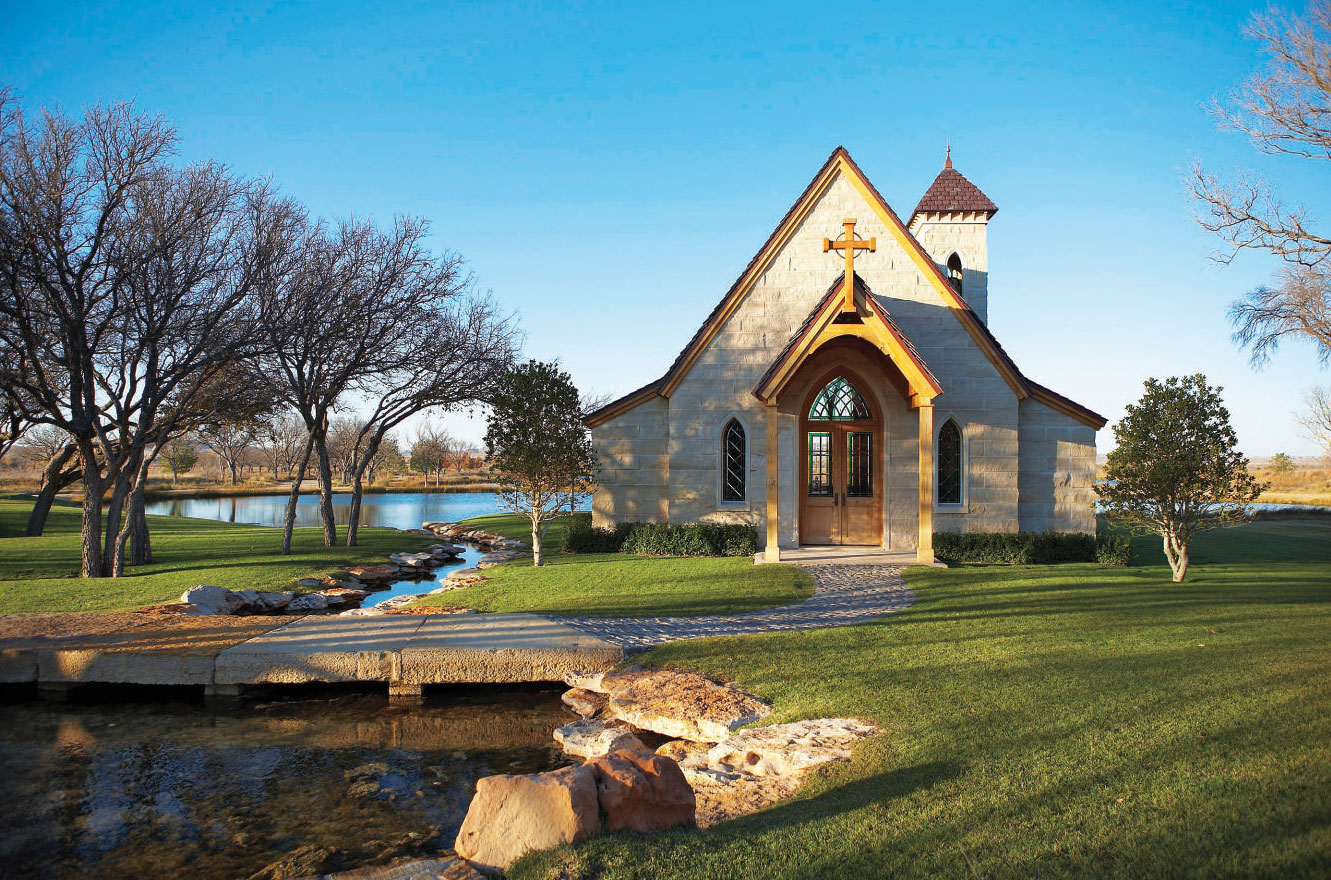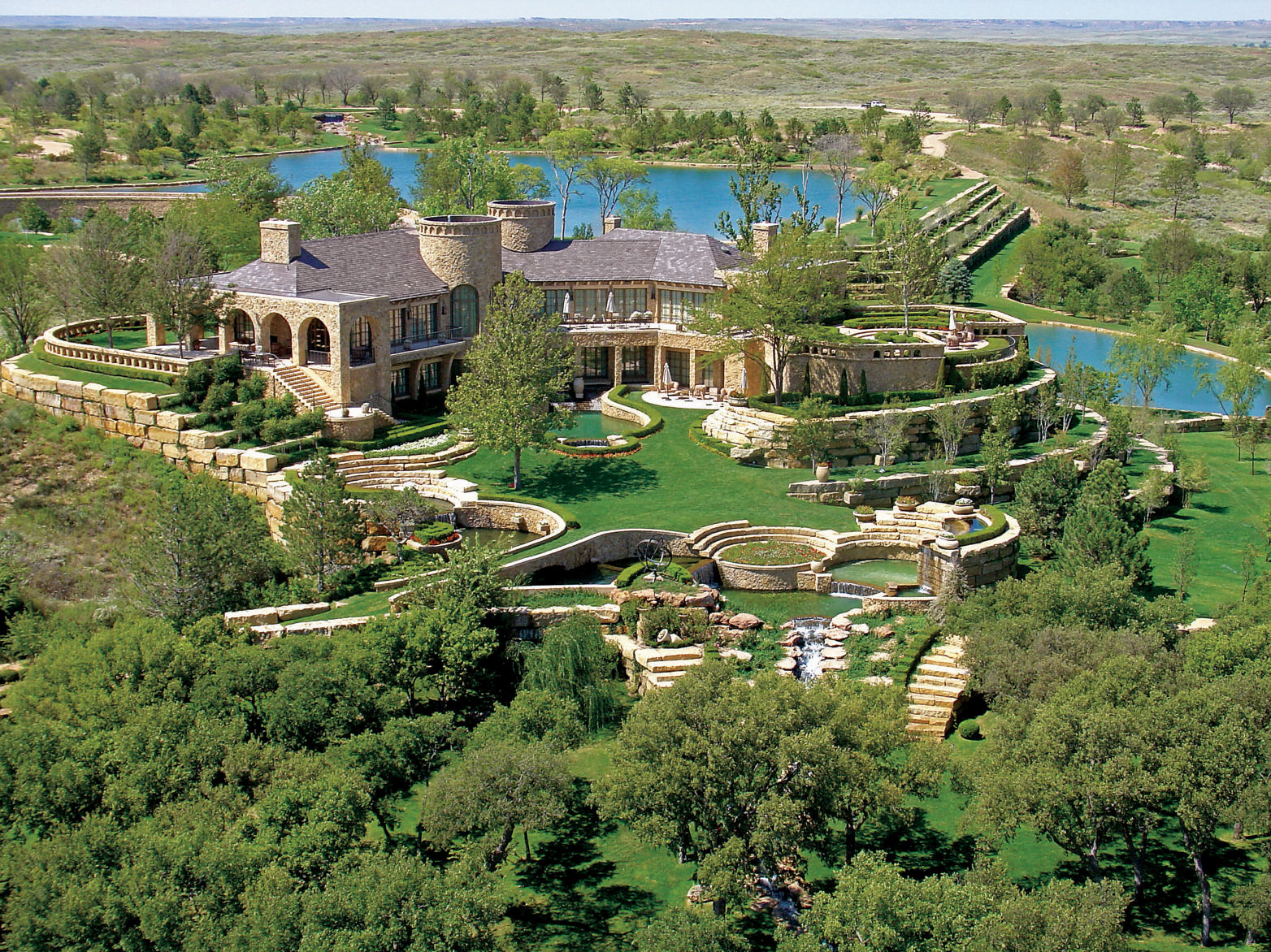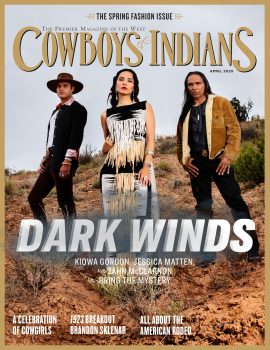Energy tycoon T. Boone Pickens made his fortune in oil, but once he realized his arid Texas Panhandle ranch was water rich, he knew his next big investment would be in a sportsman’s lakeside paradise.
T. Boone Pickens doesn’t use email; it’s too impersonal. At 83 (now 88), he’s still a face-to-face and phone kind of guy, having built one empire, sold it, and built another on the power of a handshake and an uncanny understanding of oil and natural gas. Presidents take his calls, and national security experts stop by his kitchen for lunch. On any given day, the private airfield on his 68,000-acre Mesa Vista Ranch in the Texas Panhandle may be dotted with the luxury jets of the handful of other major players on the petroleum stage.
T. Boone inspires a lot of opinions, and he’s got plenty of his own. But love him or distrust him, Pickens has a point to make — and a capital “P” plan.
“This is not about party politics,” he says about the current energy crisis. “I’ve sat down with Bush and I’ve sat down with Obama. They both agreed that we need an energy plan, but we still don’t have one. This is about patriotism, about saving our country. We are 4 percent of the world’s population, using nearly 25 percent of the world’s oil. It is not sustainable, and it sure as hell doesn’t make sense.”
He pauses, taking a swig of his Diet Dr Pepper and pulling a small paper calendar out of his back pocket to check his schedule for the day. His handwriting is tiny and neat. “People may be surprised to hear this from a conservative, but we need a national energy company — that’s the missing link.”
But Pickens isn’t going to give a lecture; he’s going to give a tour. Wearing a pair of well-worn khaki pants, an old braided-leather belt, and American-made New Balance tennis shoes, he confidently maneuvers his Cadillac Escalade over the ranch’s dirt roads. He slows up briefly to point out a particularly pretty cottonwood, one of the thousands of trees he has planted or had moved here to line the series of man-made lakes and meandering streams laid out parallel to the natural Canadian River, 24 miles of which flow along the northern edge of his property. He still hand-prunes many of the trees himself.
“It makes them healthier, and better looking,” Pickens says matter-of-factly, as one imagines his own father might have instructed him, standing on the lawn of the modest bungalow where he grew up in Holdenville, Oklahoma.

The only child of a petroleum land man and a government administrator, Pickens is proud of his humble roots. It’s easy to compare his modest childhood with his current fortunes, as his boyhood home now sits just down the road from his palatial compound. The old house was a gift from wife Madeleine, who had the abandoned structure packed up and moved the 300-some odd miles west to the ranch. According to Pickens, when the designer came to cut up the home built by Pickens’ grandfather into three pieces for transport, he said with due deference, “This is a well-built house.”
Now fully renovated, the 1923 clapboard structure is pretty as a white-picket-fence picture, outfitted with family photos and rocking chairs and a vintage enamel kitchen stove. Outside, a brick path leads up to the garage, where a basketball hoop is mounted above the door. “At the original homesite, we had a raised concrete driveway that was a good 6 inches off the ground,” Pickens recalls. “Off the driveway was out of bounds, so I would launch myself off the curb to take a shot so no one could block me.” He took his practiced fadeaway shot to Texas A&M University, that is until they revoked his $25/month scholarship and he transferred to Oklahoma State University (at the time still known as Oklahoma A&M), which has since received more than $500 million in donations from the avid alum — making Texas A&M’s decision the costliest cut in NCAA history.
As far as he has come, Pickens says he could live modestly again, and he clearly hasn’t forgotten what that was like. “I was an only child. To save my mother’s and my life, the doctor performed a C-section after reading a page in a book — the first one ever done in the county — so my mother couldn’t have any more children. I had friends who had to sleep three kids to a bed, but I had my own room. We didn’t have air conditioning, but I would pull my bed up to the window and place my pillow by the screen so I could catch the breeze. And we had indoor plumbing, which was more than some folks had.” He pauses, a gleam in his eye. “But if I moved back in, I would put in a second bathroom.”

As Pickens drives past his boyhood Holdenville house, he is getting constant stock updates over the hands-free phone from an employee at his Dallas headquarters. With every 2-cent dip or rise, it is clear vast sums are at stake. “See that grave?” Pickens suddenly interrupts, pointing at a new stone monument off in the scrub to the left. “A young girl from a wagon train died and was buried there. We don’t know her name, but my granddaughter became fascinated with the story and named her Pearl.” Granddad had a memorial placed on the spot to commemorate the nameless pioneer and her perilous journey west.
Off to the right he points out a series of patches of cattails and reeds, evidence of the 70 miles of well water lines he has run on the property to provide for the thousands of quail, turkey, and mule and whitetail deer that call Mesa Vista home. The ground here is at the water table — dredge a line and you create a creek — and the ranch itself sits on top of the Ogallala Aquifer, an ancient underground water reservoir that extends across eight Great Plains states and holds about 100 times as much water as Lake Mead holds when full. It’s the largest aquifer in North America, and the reason Pickens has been accused of water hoarding. But ask him about the business of water and he responds that although he has annual permits for 40,000 acre-feet of water rights at Mesa Vista, he only uses 10,000, and, for the most part, the water flows straight through his property.
Meanwhile, by bringing a small fraction of that water to the surface, he’s managed to create one of the largest wetland habitats in America. The 400 acres of duck ponds, lakes, and beaver-dam-studded creeks have helped create what has been dubbed “the finest quail-hunting spot in the known universe” by Dallas Morning News outdoors writer Ray Sasser (who also recently authored a book on the ranch). Feeders help support quail, pheasant, and dove populations year-round, and irrigation circles have been converted from cash crops to wildlife cover. Pickens also makes sure there is plenty of protein for the 3,000-plus deer on the property. Each fall the ranch usually bags 30 trophy bucks, which are processed in an on-site facility next to the hunting dog kennel.

And then there are the buildings. Pickens built a massive 23,000-square-foot resort-style lodge with conference facilities and a museum-worthy art gallery, in addition to a separate “family house” for his five children and 12 grandchildren that sports a furnished widow’s walk with 360-degree views of the surrounding prairie and buttes. There’s a chapel, pub, tennis courts, and a golf course designed by OSU athletic director Mike Holder. There’s even an apartment specifically constructed to house pilots built inside the on-site airplane hangar.
No detail is left to chance — down to the dips dug in the roadway where water flows across, forcing the Escalade to slow and purposefully ford the stream, like Pearl’s covered wagon must have done.
The crown jewel of the property is the simply and aptly named Lake House. Originally intended as a “small weekend cabana,” the Italianate home is, comparatively, intimate, boasting only two bedrooms (out of 50 total on the ranch property). Apart from water features that appear out of the arid land like giant puddles after a desert storm, the house was designed by Pickens’ friend and architect Tommy Roberts to otherwise blend in with its surroundings. Oriented to take advantage of the best views of the surrounding buttes, it also takes advantage of the sun’s location throughout the seasons. On the summer solstice, the setting sun actually shines directly through the house from the center of the front door.
It is obvious why Pickens and Madeleine primarily choose to stay at the Lake House when they are at the ranch. But don’t expect Pickens to retire here; he’s seen friends slow down and wither, and he has no intention of doing the same. He’s got plans: to spend more of the next year in his office, staying sharp by keeping up with a volatile market, and giving speeches around the country about the Pickens Plan, his vision for greater U.S. energy security that hinges on the promotion of domestic fuels.

“Seventy percent of the oil produced in the world every day goes to transportation fuel,” Pickens points out. “Wind and solar energy have their value, but they don’t fuel transportation.” As he sees it, the new patriotism is not so much about importing from Detroit or even limiting consumption (although he is a stickler for turning off the lights and closing the shades in the summer) as it is about creating a market for vehicles that run on domestic fuel. “Pick a car that runs on ethanol, natural gas, or a hybrid. Discuss the decision with the family. Then, when the kids grow up, they’ll understand the value of domestic fuels over OPEC oil when they are car-buying. That’s how we change our dependence on foreign oil.”
And even as he enjoys driving his 2009 Escalade (he says he wanted a natural gas vehicle, but to date there is no place to fuel one in the area) and the other fruits of his finances, he’s planning to give away $1 billion to charity before he dies (he’s already over the $800 million mark). Believing, like Warren Buffett, that inherited wealth is inherently destructive, Pickens has decided that when the ranch is sold, the proceeds will go to his foundation.
But the sale will come with a couple of conditions. First off, Pickens expects the shortlist of potential buyers (Ted Turner? Bill Gates?) to attend his funeral. And secondly, he expects them to be equally passionate about the property and its conservation legacy.
With the tour concluded, he pulls back up in front of the lodge and looks out at the distant horizon. “I want someone to look at all this and say, ‘Boone made a good start, but I can make it better.’ ”
From the November/December 2011 issue.














